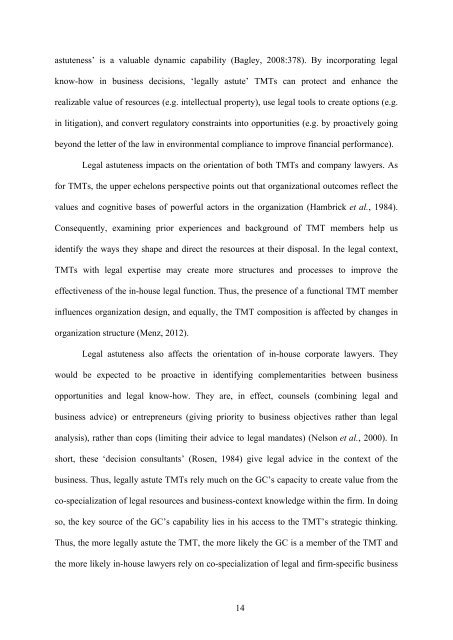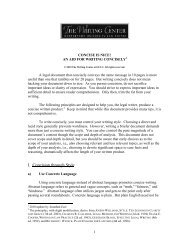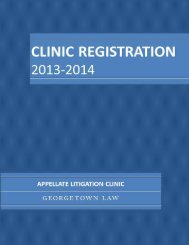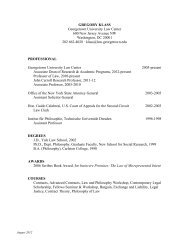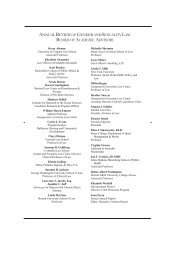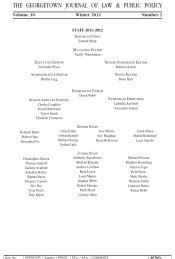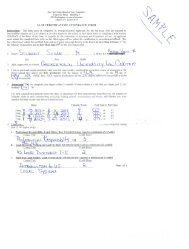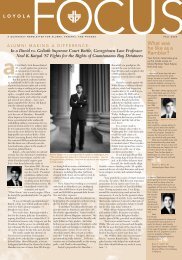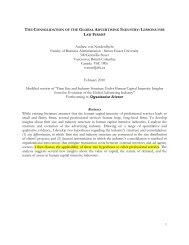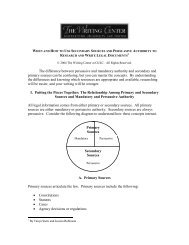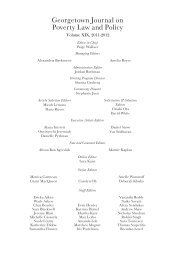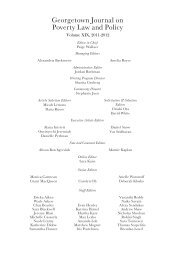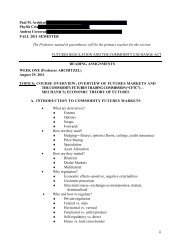Date: April 12, 2013 Topic: The Shrinking ... - Georgetown Law
Date: April 12, 2013 Topic: The Shrinking ... - Georgetown Law
Date: April 12, 2013 Topic: The Shrinking ... - Georgetown Law
Create successful ePaper yourself
Turn your PDF publications into a flip-book with our unique Google optimized e-Paper software.
astuteness’ is a valuable dynamic capability (Bagley, 2008:378). By incorporating legal<br />
know-how in business decisions, ‘legally astute’ TMTs can protect and enhance the<br />
realizable value of resources (e.g. intellectual property), use legal tools to create options (e.g.<br />
in litigation), and convert regulatory constraints into opportunities (e.g. by proactively going<br />
beyond the letter of the law in environmental compliance to improve financial performance).<br />
Legal astuteness impacts on the orientation of both TMTs and company lawyers. As<br />
for TMTs, the upper echelons perspective points out that organizational outcomes reflect the<br />
values and cognitive bases of powerful actors in the organization (Hambrick et al., 1984).<br />
Consequently, examining prior experiences and background of TMT members help us<br />
identify the ways they shape and direct the resources at their disposal. In the legal context,<br />
TMTs with legal expertise may create more structures and processes to improve the<br />
effectiveness of the in-house legal function. Thus, the presence of a functional TMT member<br />
influences organization design, and equally, the TMT composition is affected by changes in<br />
organization structure (Menz, 20<strong>12</strong>).<br />
Legal astuteness also affects the orientation of in-house corporate lawyers. <strong>The</strong>y<br />
would be expected to be proactive in identifying complementarities between business<br />
opportunities and legal know-how. <strong>The</strong>y are, in effect, counsels (combining legal and<br />
business advice) or entrepreneurs (giving priority to business objectives rather than legal<br />
analysis), rather than cops (limiting their advice to legal mandates) (Nelson et al., 2000). In<br />
short, these ‘decision consultants’ (Rosen, 1984) give legal advice in the context of the<br />
business. Thus, legally astute TMTs rely much on the GC’s capacity to create value from the<br />
co-specialization of legal resources and business-context knowledge within the firm. In doing<br />
so, the key source of the GC’s capability lies in his access to the TMT’s strategic thinking.<br />
Thus, the more legally astute the TMT, the more likely the GC is a member of the TMT and<br />
the more likely in-house lawyers rely on co-specialization of legal and firm-specific business<br />
14


